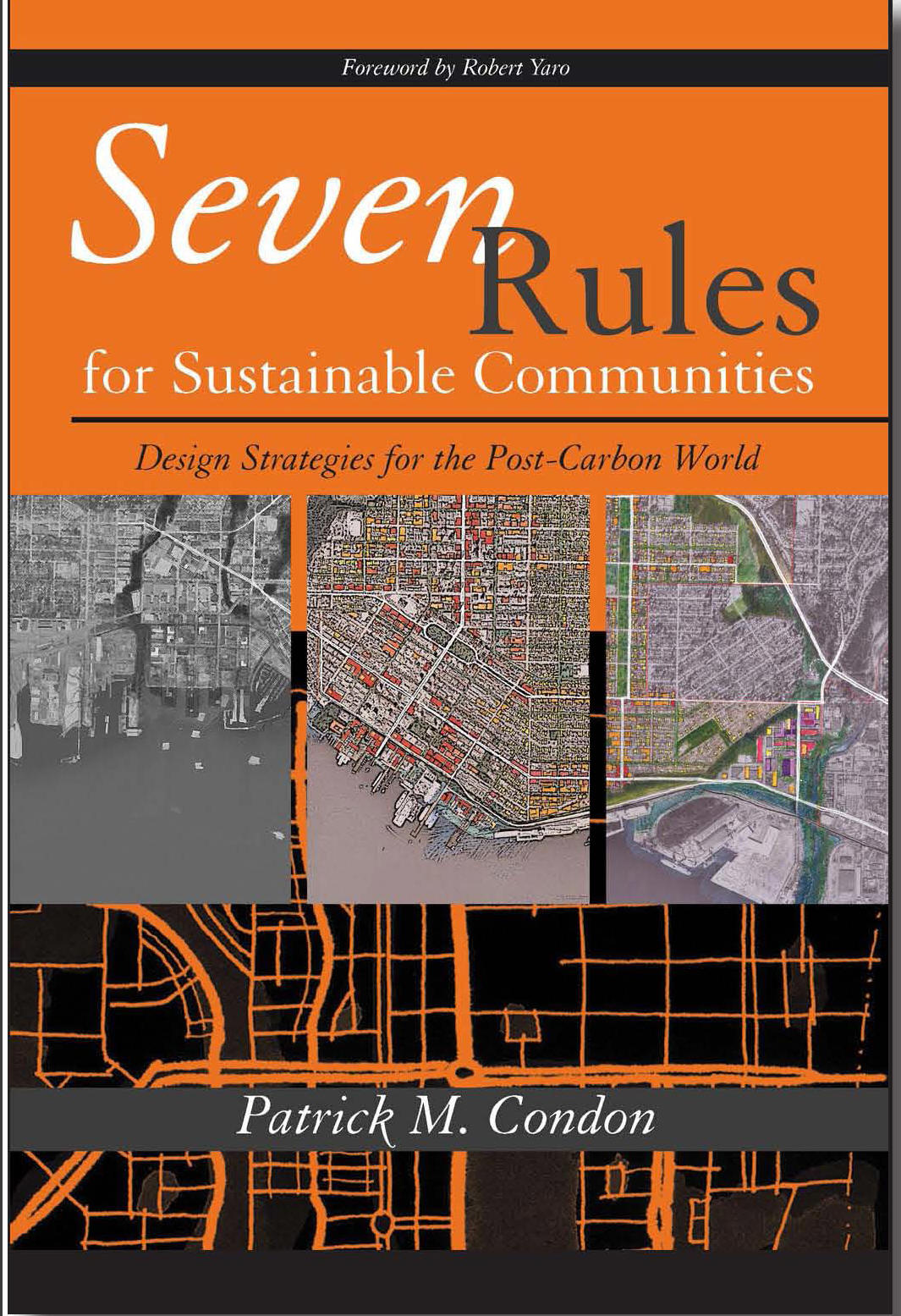Light Imprint Handbook Integrates Sustainable Green Infrastructure and Community Design
Light Imprint is….
Light Imprint is a green approach to neighbourhood design. It employs New Urbanism principles to create compact, walkable, mixed-use neighbourhoods. To this, it adds a tool box of techniques to manage stormwater and natural drainage. Hence, Light Imprint is described as:
- a design methodology that combines ecologically sensitive rainwater management techniques with community design principles.
The Light Imprint tool set addresses rainwater and stormwater runoff through natural drainage, conventional engineering infrastructure, and innovative infiltration practices. Sixty-four tools make up the Light Imprint matrix for projects ranging in size from the lot to the block to the neighborhood to the region.
Handbook and Interactive Website
Light Imprint is presented in two formats: the Handbook and the Website. These are meant to complement each other. Each Light Imprint tool is shown in the context of an actual New Urbanism project.
A Recognized Rainwater Mitigation Practice
 “Light Imprint is a design methodology and operating system for consideration and incorporation of ecological performance with placemaking. The basic premise is to recover and maintain the pre-development natural hydrology of the site when land is developed or redeveloped,” states Thomas Low, author of the Light Imprint Handbook: Integrating Sustainability and Community Design.
“Light Imprint is a design methodology and operating system for consideration and incorporation of ecological performance with placemaking. The basic premise is to recover and maintain the pre-development natural hydrology of the site when land is developed or redeveloped,” states Thomas Low, author of the Light Imprint Handbook: Integrating Sustainability and Community Design.
“Established in 2006, the Light Imprint methodology has expanded it’s educational outreach and professional contributions to become a recognized rainwater mitigation practice. Recent advancements showing great promise for the Light Imprint methodology include design and development approaches with increased cost savings and compelling engineering metrics for town centers, sprawl repair, infill, brownfield, greenfield, and rebuilding.”
“When I reflect on what is involved in leading change, this Patrick Condon quote comes to mind: Alignment of the change agents in the ‘New Urbanism’ and the ‘Engineering Infrastructure’ worlds would surely result in a pretty powerful combination.”
Light Imprint Green Infrastructure
“Light Imprint green infrastructure is compatible with urban design that emphasizes compact, mixed-use, pedestrian-oriented design, and environmental efficiency. It is designed to reduce community infrastructure costs,” continues Thomas Low.
“It allows municipal staff, land planners, architects, property owners, environmentalists, development teams, engineers, and land conservationists to select site-specific Light Imprint tools.”
“Light Imprint can be adjusted based on the site location (climate), the soil character (soil type), the intensity of development (transect), the topographical conditions (slope), the initial project budget (cost), and the plan for upkeep (maintenance cost). Light Imprint emphasizes design of public civic spaces and connectivity.”
About Thomas Low:
Thomas Low, AICP, is a registered architect and certified planner. He is the Director of DPZ Charlotte and a partner in the firm of Miami-based Duany Plater-Zyberk & Company, Architects and Town Planners.
He leads the research initiative on Light Imprint. This includes publication of the Light Imprint Handbook and creation of the interactive website, www.lightimprint.org. He has published numerous articles and books, including the Light Imprinters Almanac: Engaging Growers and Dwellers.
Light Imprint New Urbanism
Light Imprint New Urbanism (LINU) is a comprehensive planning and development framework that emphasizes sustainability, pedestrian-oriented design and increased environmental and infrastructural efficiency, while reducing a community’s anticipated construction expenses by up to one third of conventional practices.
- On a regional scale, building compact urban entities reduces the stress and fragmentation of the watershed caused by roads, infrastructure and impervious cover.
- This strategy preserves the resources provided by the watershed and creates environmentally sustainable communities.
- On a community and building scale, Light Imprint development makes communities more economically vital by reducing infrastructure such as roads, public works and facilities.
- The implementation of Light Imprint methods also results in a smaller ecological footprint of individual buildings.
The hydrological effects include decreased rainwater runoff in terms of total volume, peak capacity and enhanced groundwater recharge, all of which are critical factors for sustaining stream flow and as a result a considerably lower flood and erosion potential due to induced changes of the environment.
New Urbanism Explained
New Urbanism promotes the creation and restoration of diverse, walkable, compact, vibrant, mixed-use communities composed of the same components as conventional development, but assembled in a more integrated fashion, in the form of complete communities. New Urbanism is:
- An international movement to reform the design of the built environment, and is about raising the quality of life and standard of living by creating better places to live.
- The revival of the lost art of place-making, and is essentially a re-ordering of the built environment into the form of complete cities, towns, villages, and neighborhoods – the way communities have been built for centuries around the world.
- About fixing and infilling cities, as well as the creation of compact new towns and villages.
 In British Columbia, a leading proponent of New Urbanism is Patrick Condon, author of Seven Rules for Sustainable Communities. “It is up to a new generation of citizens, professionals, and elected officials to coalesce around a common vision for the future — a common vision deeply grounded in the pioneering efforts of the previous generation, and in the tangible physical realities of the place where we live,” states Patrick Condon.
In British Columbia, a leading proponent of New Urbanism is Patrick Condon, author of Seven Rules for Sustainable Communities. “It is up to a new generation of citizens, professionals, and elected officials to coalesce around a common vision for the future — a common vision deeply grounded in the pioneering efforts of the previous generation, and in the tangible physical realities of the place where we live,” states Patrick Condon.
Posted May 2011



